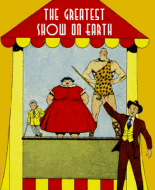Insight into postwar British comics
Pages: [1]
 Author
Topic: Insight into postwar British comics (Read 552 times)
Author
Topic: Insight into postwar British comics (Read 552 times)
Pages: [1]
| Guest • Login • Register • Sitemap • Privacy • About • Contact • Help |
|
Categories |
Newsstand |
Listening Guide |
Insite |
| our site? | a single amount, or | annually and you will help make it even better!! | more... |
